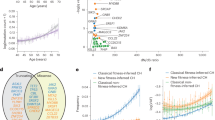Abstract
A 15 month old boy with a stage IV right suprarenal gland neuroblastoma showed a number of raised biochemical parameters, whilst catecholamines and skeletal survey were normal. Treatment with peptichemio failed to give a clinical response. Histological evidence of neuroblastoma infiltration in the bone marrow aspirate was absent. Immunofluorescence on sedimented cells was negative using antibody UJ223.8, PI153/3 and H11; only UJ308 and to a lesser extent UJ13A gave positive results. After 21 days, however, the same cells in culture showed highly differentiated dendritic processes. Thirty-seven percent metaphases from bone marrow aspirate showed the following karyotype 45XY, del (1) (p32), and two markers. Mar1 = der (2) t (2; 2) (2qter----2q14::2p24----2qter). Mar2 = der (15) t (15; 2) (15qter----15p11::2p11----2pter). Treatment with methotrexate reduced the aberrant mitoses rate to 2%. N-myc in situ hybridisation showed significant signal on both markers confirming the cytogenetic interpretation. Peripheral blood lymphocytes at 72 h showed a higher level of breaks per cell than control. After treatment with aphidicolin (APC) or methotrexate (MTX) for the last 24 h, to induce fragile sites, the incidence of breaks per cells was increased. Moreover 11.4% of APC-induced breaks were in 1p31-32 (mean of normal controls = 2.3%). The mother presented an increased sensitivity to the inducibility of fragile sites, while the father's lymphocytes showed values within the control range. The genetic changes produced by the abnormalities on chromosomes 1 and 2 might be related to tumour progression. Furthermore this is the first description of correlation between a high frequency of fragile site 1p31-32 induced by APC in the patient's lymphocytes and deletion of 1p32 in tumour cells. The interpretation of these findings and of other similar correlations needs further study.
This is a preview of subscription content, access via your institution
Access options
Subscribe to this journal
Receive 24 print issues and online access
$259.00 per year
only $10.79 per issue
Buy this article
- Purchase on Springer Link
- Instant access to full article PDF
Prices may be subject to local taxes which are calculated during checkout
Similar content being viewed by others
Author information
Authors and Affiliations
Rights and permissions
About this article
Cite this article
Vernole, P., Concato, C., Pianca, C. et al. Association of cytogenetic abnormalities in a neuroblastoma and fragile sites expression. Br J Cancer 58, 287–291 (1988). https://doi.org/10.1038/bjc.1988.205
Issue Date:
DOI: https://doi.org/10.1038/bjc.1988.205
This article is cited by
-
Bleomycin-induced chromosomal damage in tuberous sclerosis
Japanese journal of human genetics (1990)



